
The 2023 Kings Seeds Catalogue Has Arrived
Hello friends,
Down here in Dunedin, we are currently in the depth of winter. The winter solstice may have been a month ago, but now is the coldest time of the year for us, and will probably stay that way until late August at least. If it's not freezing cold and sunny, it's gray and rainy and soggy (and also still cold). Both outcomes mean not much can be done in the garden at the moment, on frosty days the ground is frozen solid, and on rainy days the garden is very squishy.
My frustration at not being able to get into the garden due to the weather has been made worse by me having minor toe surgery two weeks ago which has turned complicated thanks to an infection (as always, sigh). At the moment I can't fit my bandaged toe into any shoes (well apart from jandals), and if that wasn't bad enough, I'm not allowed to get my bandage and toe wet at all which would totally happen if I attempted to wear jandals in the garden right now. This pretty much means I have been confined to inside my home since the surgery, well apart from when I have to go to the doctors to get my dressing changed.
Just when I began to feel a little down about all this, one of the most exciting gardening days of the year happened, the arrival of the 2023/2024 Kings Seeds Catalogue. There's nothing like ripping open the packaging, sniffing that new magazine smell, and then flipping through the pages to see what seed goodies are available this year.


The first responsible thing to do though is to go through my current flower, herb and vegetable seed stashes and see what I have, there's no point in buying seed when I have plenty stored away already. My seed stashes are split into three sections, flowers, herbs, and vegetables. The flowers and herbs seeds are in disorganized chaos inside some plastic tubs.


The vegetable seeds however are meticulously organized in a craft storage box from Spotlight. It has lots of small containers which I use to separate the vegetable seeds based on each vegetable type. And thanks to my handy dandy label maker I know exactly which container is which. I also use the coloured boxes to match each vegetable type, and this makes it super easy to find the corn and carrot boxes for example.
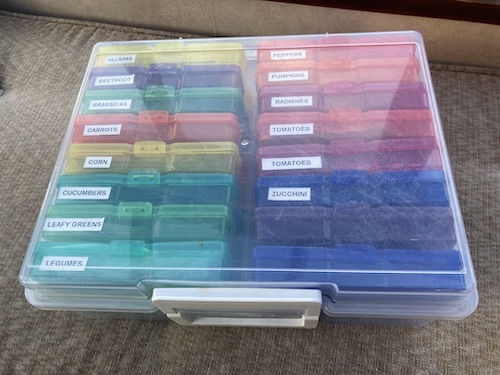

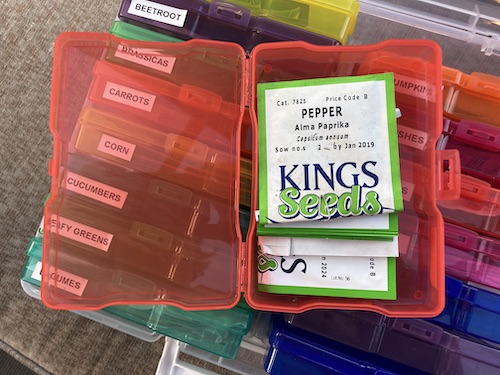
After I pull out each box I open my garden seed database and check each seed packet, and their use by date, and update the database accordingly. If any seeds are low, or finished, I highlight the database to show which seeds I need to reorder. My database also includes a section to show what times of the year the seed can be sown, and when it has been sown. It's been very handy over the years as long as it's been kept updated.
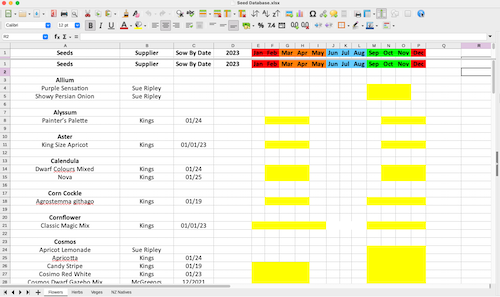
Once that is completed, it's time to browse the Kings Seeds catalogue. On the first go through I highlight all the things I need, and those that I want. I let myself go wild. After that is done, I knuckle down and make post it notes lists. This list is more focused, and I make a point of deciding things like if I do really need three different varieties of calendula...
After that, the next step is going onto the website. First of all I add stuff to the cart that we absolutely really need. After that I narrow down the other stuff I want and put it in the cart. Sometimes the seeds that I need and want appear in the Kings Seeds shopping rewards list (they have a system where after you spend a certain amount they give you free seed packets). Then I tend to juggle the cart based on if some of my seeds will end up on that list, there's no point wasting money on what will be free seeds.

After all that is done, and I've justified to myself every seed packet in the cart, it's time to pull out the credit card and pay for all my precious seeds. And then the waiting at the letterbox begins...it's nearly just as exciting sorting through all the new seed packets when they arrive.
Are you buying and growing any new varieties of plants this year in your garden? Do you have a seed database like I do? I'd be interested to find out.
Have a wonderful day
Julie-Ann
Want to discuss my post? Feel free to chat with me on Instagram or Mastodon.
Growing Citrus Plants in Mosgiel
Hello friends,
Some of my favorite fruits of all time to grow are citrus. I love growing lemon, limes, and mandarin bushes, not only for their fruit, which I love using in food and drink all year round, but also for their shiny bright foliage which looks great when the plants are grown in a patio setting.
Back when we lived in Tawa, Wellington, I was able to grow lemon, limes, and mandarin plants outdoors throughout the year in the ground at our hillside home, and only had to protect them from frost for about ten nights each year. When we moved back to Mosgiel, in Dunedin in October 2019, however, I knew I had to make a decision on how to grow my citrus plants. From previous history, I knew that I couldn't just plant them in the ground and leave them to fend for themselves in Dunedin's winters.
The suburb of Mosgiel where we now live is blessed with its own microclimate which is far different from that of the rest of Dunedin, as it lies inland, in a sheltered valley 6 km from the sea. In summer Mosgiel is warmer and sunnier than Dunedin, and in winter is is colder and frostier. I love this about Mosgiel because it is more like Central Otago/the Mediterranean, than the rest of Dunedin, which nearly always get cool sea breezes from either the south-west or the east.
Warm, sunny summers are great for citrus plants, but cold and frosty temperatures in winter, along with the occasional snow, are not, especially when temperatures drop down to -6˚C. So I decided to put my citrus plants into very large plastic terracotta-like pots so that I could shift outside to our patio in late spring, and then bring them into our glasshouse in autumn for protection over the winter months. I also chose to plant the most cold hardy varieties that I could find, to give the plants their best chance at life.
The first citrus plant chosen is the lemon variety Lemon Meyer. It is the hardiest of all lemon varieties, is a heavy cropper, and the juice from the lemon isn't too sour. It was the first citrus plant I planted. It has flourished in it's position in the patio during the summer months, and now bears many fruit each year.
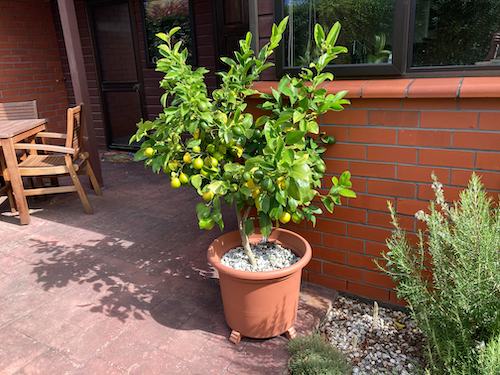
The second citrus plant chosen is the lime variety Tahitian Lime. We mostly use limes in our favorite soup recipe, Tomato, Capsicum and Lime soup, and this variety works perfectly for our needs. As limes do not like the cold at all, we were very surprised to see it growing and flourishing over the last three years. The first year we had two limes, and now each year we are getting dozens of limes off the bush, so many in fact that we are now giving our excess away.
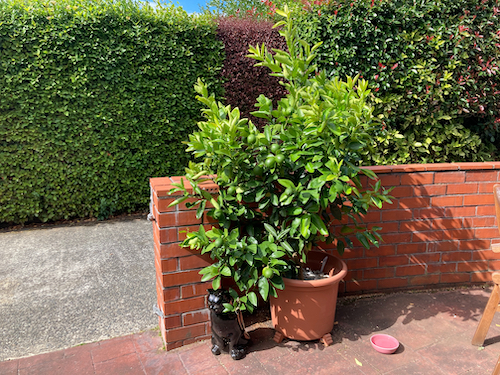
The last citrus plant we chose was the Satuma Mandarin variety. Mandarins are one of my favorite fruits (much easier to peel than oranges), and are the perfect size for snacking on. They went into our last citrus pot, and along with the lemon and lime plants, they grew healthy and strong during it's first and subsequent summers. I am currently awaiting on it's first harvest, hopefully I can eat some soon.
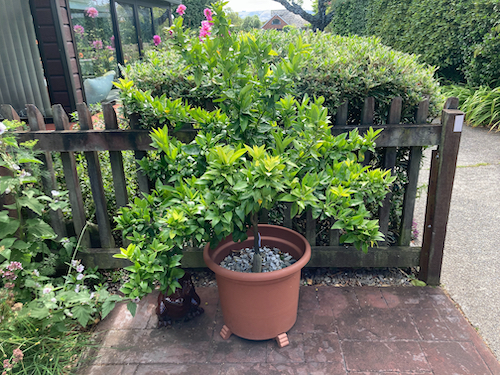
Each year, at the beginning of October, they are moved out of our glasshouse, and into our patio, where we have just enough space for the growing plants. Over the spring and summer they are fed both a monthly and long term fertiliser, and are watered nearly every day to ensure the pots don't dry out. I recently also added Ecowitt Soil Moisture sensors to each pot to keep an eye on their moisture levels, so I know exactly how each plant is faring, and if they need to be watered.
They stay there all summer long until the end of March, and then we drag them back into the glasshouse for the winter.
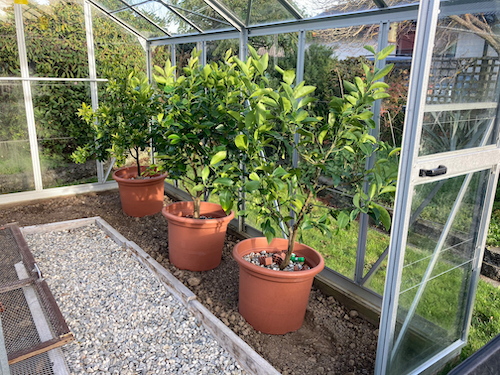
Because of the many cold and frosty days ahead I take a multiple layered approach to keeping them healthy over winter. The first is to keep them safe in the glasshouse over winter, which keeps them safe from high wind damage and protects them from small frosts.
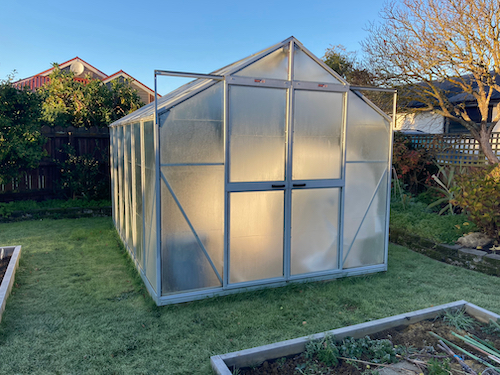
The second layer of protection is the use of Vaporgard Liquid frost cloth. It is an organic wax made from pine resin which helps protects leaves from frost damage down to -3˚C for 2 to 3 months. I usually spray my citrus plants with Vaporgard twice over winter in the glasshouse, and once more when they go outside in early October, since we sometimes get late frosts even up to the end of October. The good thing about Vaporgard is that it can also be used in summer to slow down moisture loss from plants.
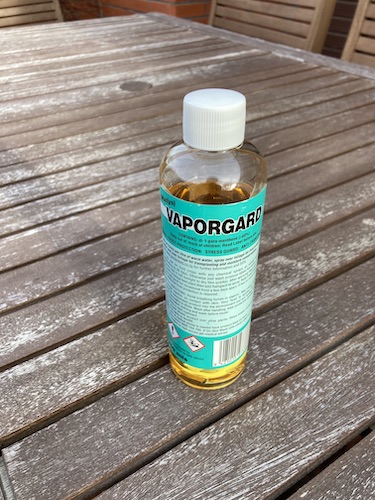
The last layer of frost protection is my ever trusty frost cloth. I have a container full of it which I drag out of the shed each autumn. I usually drape a single layer over the citrus plants on frosty nights, but if I know that a big cold snap with snow, or a prolonged period of frosty weather is about to happen, I double up the frost cloth layers. On frosty mornings I don't unwrap the citrus plants from their frost cloth layers until the glasshouse has defrosted in the sun.
This multilayered approach to frost protection has worked really well with my citrus plants until now, but now I have a problem. My citrus plants have outgrown their pots, and they have gotten too big to transport to and from the glasshouse each winter. I need to find space in the garden for them to grow and flourish, and this means I have to plant them into soil. They are in the glasshouse for the last time this winter, and come this spring, they will be planted into the ground.
This means I am currently undertaking a winter garden project to rearrange the sunniest and warmest part of our garden to fit the citrus plants into this coming spring. And then after this summer and autumn I will be undertaking another project to figure out how to protect the citrus from frosts the next winter after that.

It's a big winter garden project at the moment, but it'll be worth it once the plants are happy, and thriving, and give me much more citrus to eat and drink in the coming years.
Have a wonderful day
Julie-Ann
Want to discuss my post? Feel free to chat with me on Instagram or Mastodon.
Snow Day - Sunday 2nd July 2023
Hello friends,
We recently had our first snow day for the year, with snow falling and settling briefly at the beginning of July. During the week before, meteorologists and local weather experts began mentioning the possibility of snow over the coming weekend, first at high elevations, and then coming down to lower and lower levels as the week went on. By the time it got to Friday the 31st of June, they predicted snow to sea level on Saturday the 1st and Sunday the 2nd of June.
Hubby was very excited about this prospect, as his birthday was on Saturday the 1st of July, and he wanted snow for his birthday. The weather got colder and colder on his birthday, but all we got was a few sleety showers passing by, but unluckily no snow. The weather was so insignificant I didn't even bother taking any video for the blog.
On Sunday the 2nd of July we woke up to snow on the nearby mountains and hills, but no snow on the ground. It was all very disappointing, so we cranked up the wood burner, and kept warm on the first day of our week long staycation at home. I had basically assumed that the cold weather was all over at that point.
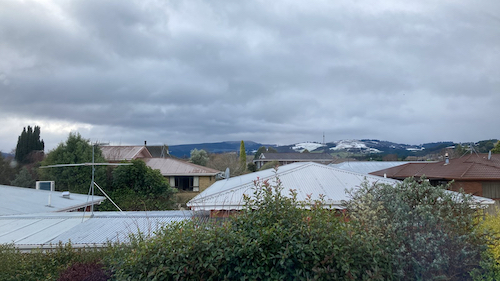
But then we had a small snow shower come through, but the snow was very wet, and it was too warm to settle on the ground.
And then an even bigger snow shower came through, and actual, real, proper snow came drifting down out of the sky. The flakes were big and fluffy and dry, the perfect snow for settling on the ground.
The snow shower then turned even heavier, and lasted for about 20 minutes, and it was finally cold enough to begin to land and settle on the ground.
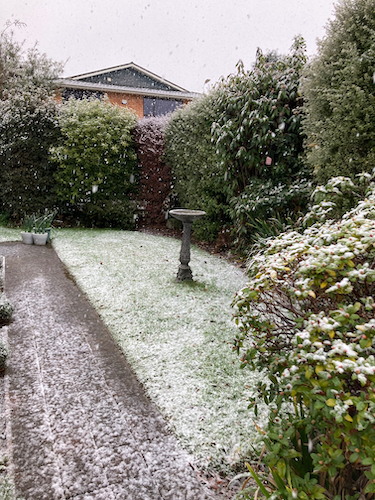
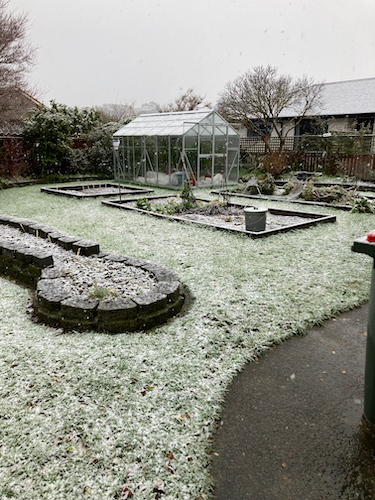
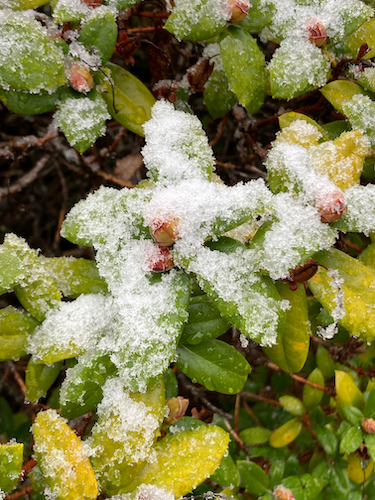
It wasn't a lot of snow, but it was nice for it to feel all wintery and cold even for an afternoon. We snuggled up next to the wood burner drinking hot chocolate and left over birthday cake. It wasn't very long at all before the snow melted away, and then the rest of our week long staycation ended up being warmish and sunny, which I appreciated because I had some winter garden projects to do.
Down here in Dunedin, we don't start to get the possibility of snow until after the winter solstice, and then it can potentially happen all the way through until the beginning of October, like it did last year. I'm sure there will be another two or three possibilities of snow in the coming months until Spring takes over.
Have a wonderful day
Julie-Ann
Want to discuss my post? Feel free to chat with me on Instagram or Mastodon.




